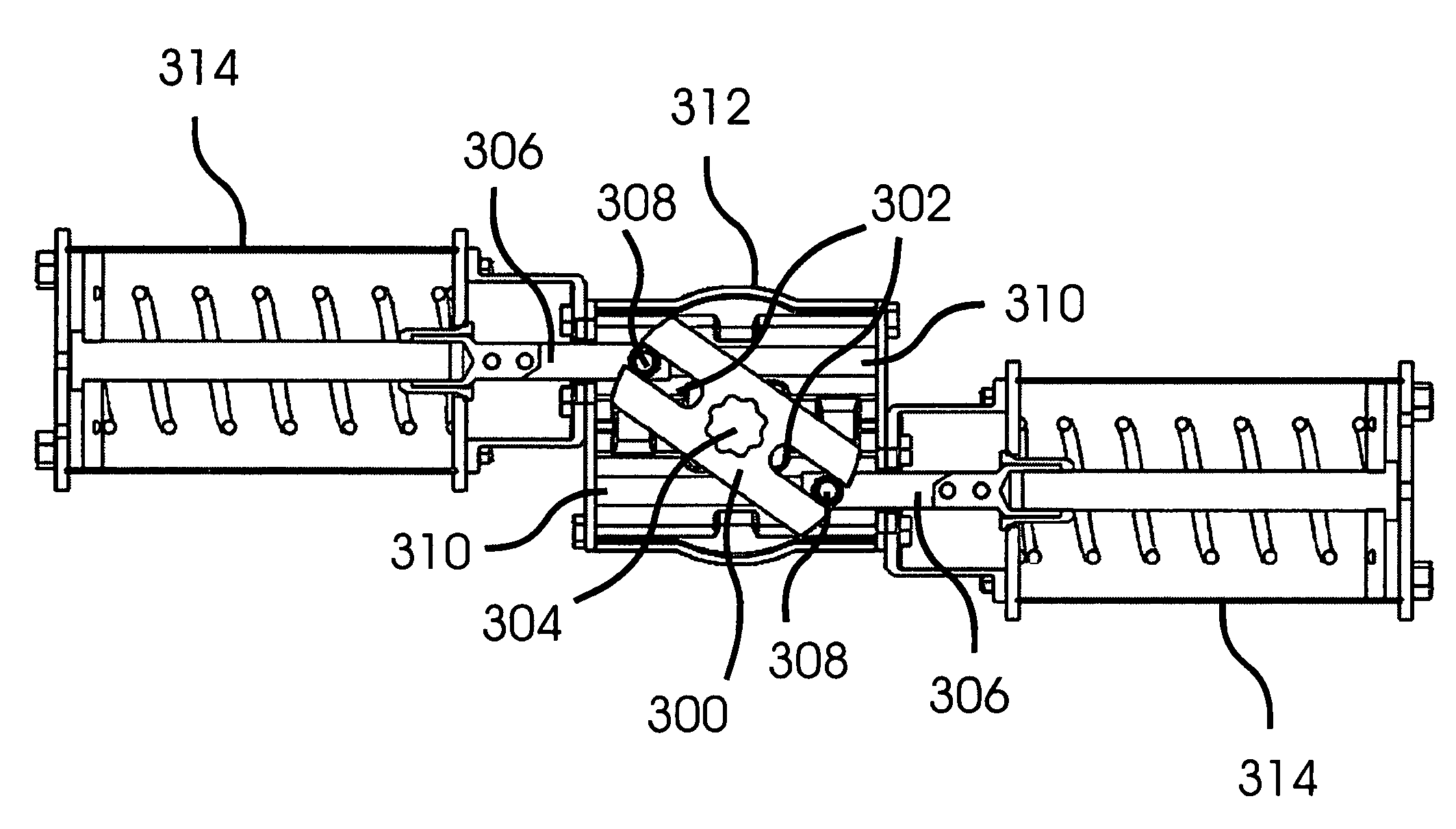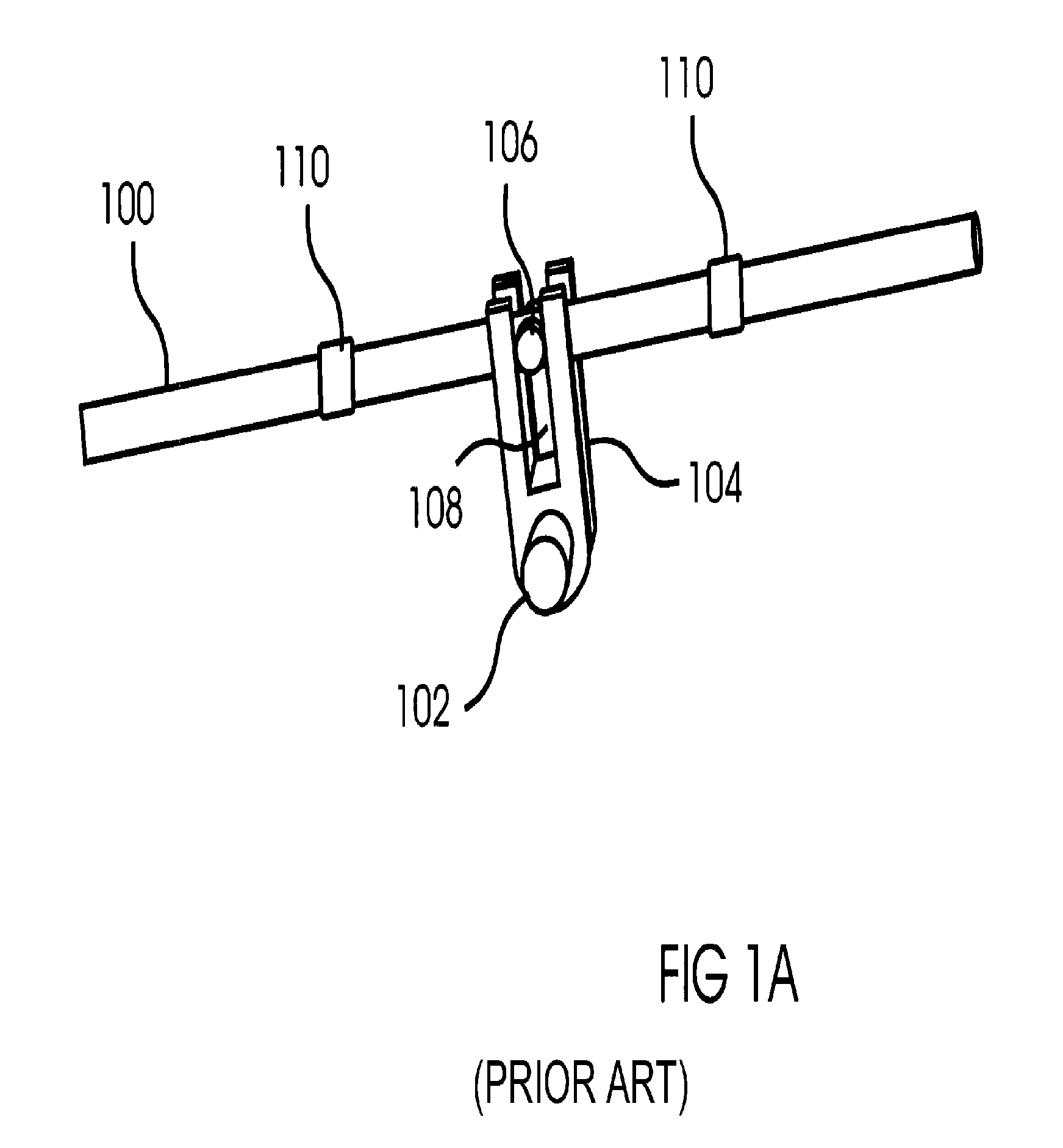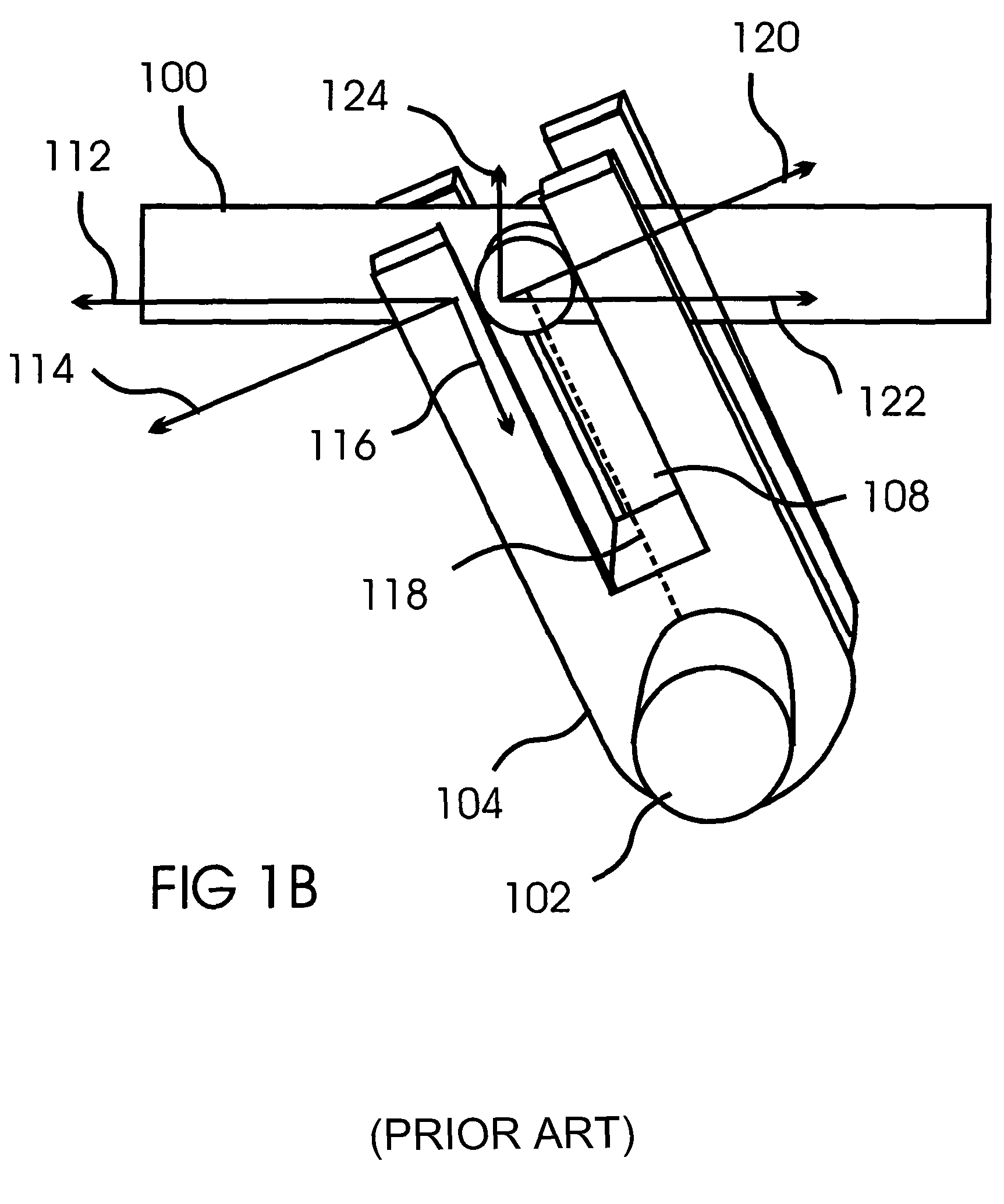Flat yoke valve actuator
a technology of actuator and yoke, which is applied in the direction of valve details, valve arrangement, gearing, etc., can solve the problems of affecting the drive mechanism of the push rod, the force applied by the push rod to the yoke is not applied, and the bushings wear and eventually fail,
- Summary
- Abstract
- Description
- Claims
- Application Information
AI Technical Summary
Benefits of technology
Problems solved by technology
Method used
Image
Examples
Embodiment Construction
[0021]With reference to FIG. 1A, in a typical Scotch yoke design a push rod 100 moves back and forth past a rotatable shaft 102 that is offset from the rod and perpendicular to it. The push rod 100 is coupled to the shaft by a lever arm or yoke 104 that converts the linear movement of the rod 100 to a rotary movement of the shaft 102, with a normal rotation angle of approximately 90 degrees. The push rod is coupled to the yoke by a yoke pin 106 that passes through a hole in the push rod and a slot 108 in the yoke 104, thereby allowing the yoke pin 106 to slide along the slot 108 as the push rod 100 moves and the yoke 104 and shaft 102 rotate. Two push rod support bushings 110 resist the side loading forces applied to the push rod 100 and maintain the orientation of the push rod 100.
[0022]FIG. 1B illustrates the forces that are applied by the push rod 100 to the yoke 104, and the reactive forces applied by the yoke 104 to the push rod 100. The push rod 100 applies a force 112 to the ...
PUM
 Login to View More
Login to View More Abstract
Description
Claims
Application Information
 Login to View More
Login to View More - R&D
- Intellectual Property
- Life Sciences
- Materials
- Tech Scout
- Unparalleled Data Quality
- Higher Quality Content
- 60% Fewer Hallucinations
Browse by: Latest US Patents, China's latest patents, Technical Efficacy Thesaurus, Application Domain, Technology Topic, Popular Technical Reports.
© 2025 PatSnap. All rights reserved.Legal|Privacy policy|Modern Slavery Act Transparency Statement|Sitemap|About US| Contact US: help@patsnap.com



